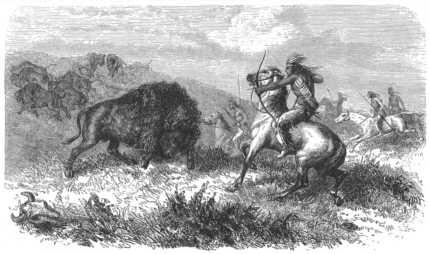1. Early History
In early America there were only two ways
to get around, by water or by trail. Most of
the roads were unimproved and many of
them followed the trails used by the Native
Americans. Travel on land was limited
because there were few bridges, weather
often made passages difficult, and it was
expensive to transport goods and supplies.
Water travel allowed you to carry more
goods but destinations were limited to
places on navigable waterways.
Before being converted to a rail-trail, the
Old Plank Road Trail played a major role
in the early transportation history of
Illinois.
For many years it was a trail used by those on foot or on horseback, later it was
surveyed for use as a plank road, and then a number of
railroads ran passenger and freight trains over the route.
Finally, in 1997, it became what we know it as today: a
recreational trail, a nature preserve corridor, a green
belt, an alternative transportation network.
The area between the bottoms of Lake Erie and Lake
Michigan has played a central role in North American
transportation and communication.
In earlier years, before Europeans invaded the area; the
Kickapoo, Potawatomi, Miami, Sauk, Fox and Illinois
tribes, developed trails and portages. A short portage
between the Chicago River and the Des Plaines River
allowed them to travel and transport goods all along the
Mississippi and Missouri Rivers and anywhere on the
Great Lakes.
If they were traveling on foot or
by horse they could follow the
Sauk Trail east to Lake Erie or
west across Illinois to the Rock
Island area on the Mississippi
River. A second water route through this area required a short
portage in north central Indiana where travelers from the
Kankakee River could connect with the St. Joseph River.
In 1816, A cession of land suitable for building a canal was
secured by a treaty with the allied Tribes of Chippewa,
Ottawa, and Potawatomi, negotiated at Portage des Sioux,
Missouri, in August 1816 by William Clark, Ninian Edwards,
and Auguste Chouteau.
The cession area covered a wide strip between Chicago
and Ottawa.



Old Plank Road Trail
A 22-mile recreation and nature trail in northeastern Illinois




















